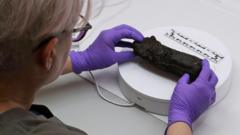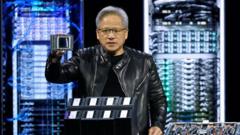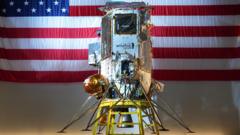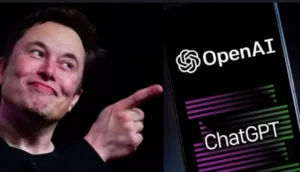Using cutting-edge technology, a burnt scroll from Herculaneum emerges from obscurity, sparking excitement in the scientific and historical communities.
Digital Breakthrough: Burnt Herculaneum Scroll Revealed After 2,000 Years

Digital Breakthrough: Burnt Herculaneum Scroll Revealed After 2,000 Years
AI and X-ray imaging provide unprecedented insights into a charred scroll from Roman times, paving the way for reading ancient philosophical texts.
The discovery of an ancient scroll, charred by the catastrophic eruption of Mount Vesuvius in 79 AD, has taken a significant leap forward with the use of advanced digital imaging techniques. For the first time in two millennia, researchers are accessing the content of this fragile document through a fusion of X-ray scans and artificial intelligence, which has allowed them to virtually "unwrap" the scroll.
Herculaneum, a town once teeming with life, was buried under thick layers of volcanic ash, preserving a wealth of historical artifacts, including hundreds of carbonized scrolls. The particular scroll in question resembled a lump of charcoal and was deemed too delicate to open physically. The successful application of modern technology, however, suggests that the secrets held in its layers may soon be revealed.
Leading the Vesuvius Challenge, a project seeking to unlock the Herculaneum scrolls, Stephen Parsons expressed optimism about the findings. He noted, “We’re confident we will be able to read pretty much the whole scroll in its entirety,” a significant shift from previous efforts. Initial images suggest that the document contains Greek letters and is likely a work of philosophy, paralleling what previous research revealed in a different Herculaneum scroll.
The scroll was safely transported to Diamond Light Source, an advanced imaging facility in Oxfordshire designed specifically for such delicate analyses. Utilizing a synchrotron x-ray machine, researchers can focus on the minutiae of the scroll’s structure, distinguishing its layers without inflicting harm. “It can see things on the scale of a few thousandths of a millimeter,” explained Dr. Adrian Mancuso, highlighting the precision involved in the investigation.
Once the 3D reconstruction is achieved, the pivotal challenge lies in differentiating the ink from the carbonized papyrus, as both are composed of similar materials. AI technology is employed to identify even the faintest traces of ink, reconstructing the letters in a digital format. Parsons stated that “we can tell the entire scroll is full of text," which is promising for future deciphering efforts.
As the team collaborates to make substantial portions of the scroll legible, the implications of the findings extend beyond mere archaeology. Nicole Gilroy, head of book conservation at the Bodleian Library, shared her emotional connection with the ancient creators of these texts, adding, “There’s a real human aspect to it that I just think is really precious.” This passion for reconnecting with history through technology encapsulates the broader significance of the project, bridging gaps between the ancient world and today's society.
The ongoing work on the Herculaneum scrolls not only enriches the scientific understanding of ancient texts but also reignites curiosity about the philosophical and cultural insights they likely contain—insights that may prove to resonate with contemporary audiences.
Herculaneum, a town once teeming with life, was buried under thick layers of volcanic ash, preserving a wealth of historical artifacts, including hundreds of carbonized scrolls. The particular scroll in question resembled a lump of charcoal and was deemed too delicate to open physically. The successful application of modern technology, however, suggests that the secrets held in its layers may soon be revealed.
Leading the Vesuvius Challenge, a project seeking to unlock the Herculaneum scrolls, Stephen Parsons expressed optimism about the findings. He noted, “We’re confident we will be able to read pretty much the whole scroll in its entirety,” a significant shift from previous efforts. Initial images suggest that the document contains Greek letters and is likely a work of philosophy, paralleling what previous research revealed in a different Herculaneum scroll.
The scroll was safely transported to Diamond Light Source, an advanced imaging facility in Oxfordshire designed specifically for such delicate analyses. Utilizing a synchrotron x-ray machine, researchers can focus on the minutiae of the scroll’s structure, distinguishing its layers without inflicting harm. “It can see things on the scale of a few thousandths of a millimeter,” explained Dr. Adrian Mancuso, highlighting the precision involved in the investigation.
Once the 3D reconstruction is achieved, the pivotal challenge lies in differentiating the ink from the carbonized papyrus, as both are composed of similar materials. AI technology is employed to identify even the faintest traces of ink, reconstructing the letters in a digital format. Parsons stated that “we can tell the entire scroll is full of text," which is promising for future deciphering efforts.
As the team collaborates to make substantial portions of the scroll legible, the implications of the findings extend beyond mere archaeology. Nicole Gilroy, head of book conservation at the Bodleian Library, shared her emotional connection with the ancient creators of these texts, adding, “There’s a real human aspect to it that I just think is really precious.” This passion for reconnecting with history through technology encapsulates the broader significance of the project, bridging gaps between the ancient world and today's society.
The ongoing work on the Herculaneum scrolls not only enriches the scientific understanding of ancient texts but also reignites curiosity about the philosophical and cultural insights they likely contain—insights that may prove to resonate with contemporary audiences.























